
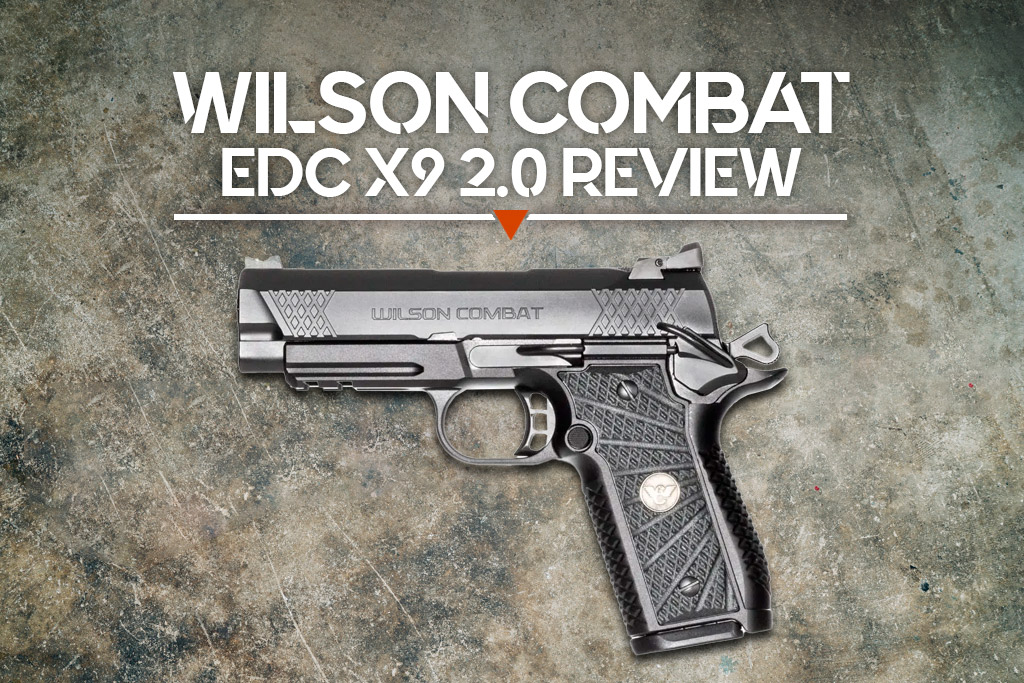
Guest Writer: Kenzie Fitzpatrick
If I’m being honest, I was a little skeptical when Wilson Combat asked me to review the EDC X9 2.0 double-stack 9mm pistol. The playing field for 9mm EDC handguns is already overcrowded. It didn’t seem likely that they could disrupt the market with a double-stack handgun that would change my mind about the way I carry. The results are in. The bar has been raised. It will be hard for any manufacturer to top this carry gun.
Let me be clear, this isn’t only my opinion. Several industry professionals and I shot the EDC X9 2.0 using different types of ammunition, including hollow points and full metal jackets. Not only did it run great, but it was also super accurate. With the compensator, it was unbelievably flat shooting. No one at the range that day wanted to put this gun down. I spent considerable time shooting this gun, drawing from concealment, and comparing it to other double-stack 1911 carry-style pistols. Without being hyperbolic, it’s now in my top three favorite pistols that I’ve ever shot.
What makes this handgun special? I’ll get into that in the review below.
What Is The EDC X9 2.0 Pistol?
Wilson Combat launched the EDC X9 in 2016, eventually making some changes and introducing the 2.0 version. This version introduced an all-new solid frame design. Its compact aluminum X-frame is beneficial for concealed carry, helping reduce recoil and improve accuracy. The EDC X9 2.0 now allows for interchangeable Classic 1911-style grips, allowing you to customize the grip to your preferences.
There are various models of the X9 2.0 design pistol. It can come with a 5-inch barrel, a 4-inch barrel, or a 3.25-inch barrel. It is optional to upgrade to a compensator. Furthermore, if you aren’t familiar with the Wilson Combat custom shop, the world is your oyster. They offer various finishes, custom checkering/serrations/stippling, engraving, unique beavertails, and different guide rods. Choose from mag wells, various safeties, ambidextrous options, and much more. When people talk about Wilson Combat, they don’t often realize they can truly build a one-of-a-kind gun.
The gun I tested was the 3.25-inch barrel pistol with the compensator. It came with a flared mag well, a railed frame, and an ambidextrous thumb safety. The Trijicon SRO was mounted on an optic plate without a rear sight (which I prefer).
They also sent magazines set up with extended base pads for added capacity. The flush fitting magazines hold 15 rounds, and the extended hold 18 rounds. It had the Black Cherry Wilson Combat grips for an added pop of color.
Wilson Combat EDC X9 2.0 Specifications
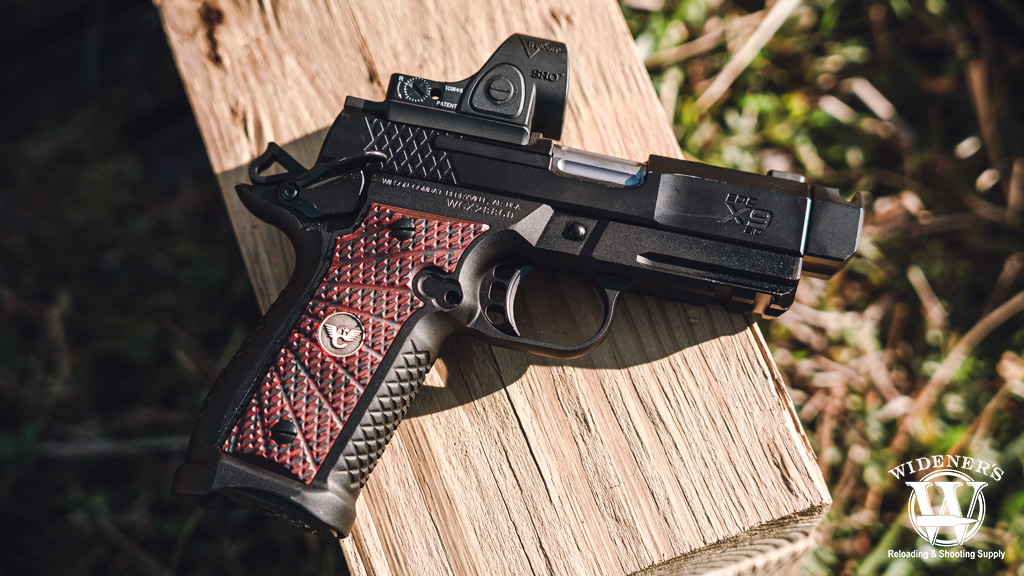
The 3.25″ Wilson Combat EDC X9 2.0 with compensator and Black Cherry Wilson Combat grips.
- Caliber: 9mm
- Magazine capacity: 15 rounds
- Barrel length: 3.25″
- Overall length: 6.75″
- Sight radius: 5″
- Height: 5.25″
- Width: 1.4″
- Weight empty: 28.6 oz
- Weight loaded: 35.3 oz
- Accuracy guarantee: 1.5″ at 25 yards
- Models: EDC X9 2.0 3.25-inch Subcompact, EDC X9 2.0 4-inch, EDC X9 2.0 5-inch
- Base price: $3,307 (9mm)
Sights Don’t Matter?
I figured now is a good time to explain why I prefer a red dot optic without the distraction of a rear sight and why sights don’t matter on a carry gun. A red dot optic is not just a sight that is easier to see, but one of the best training tools you can put on a gun. When you pull the trigger, you can physically see the dot move left, right, up, or down.
What About Iron Sights?
Even though iron sights move the same way, it’s hard to follow the front sight and see which direction it goes. It’s also more challenging to re-align the front sight perfectly between the rear sights and become target-focused with where you want to line your sights.
Most stock iron sights can be so bulky that they can cover your point of aim entirely at farther distances, so you can’t see where you’re aiming. With a red dot optic (especially smaller 1 MOA or 2.5 MOA dots), you rarely cover the entire target or point of aim. That means you can remain target-focused while re-aligning the dot on target. While you should always remain target-focused, if you have to look through the optic window to ensure your dot is on target, it’s easier if your front and rear sights aren’t covering the target.
Practical Applications
I have constantly trained at Where Our Families Train near Orlando, FL. I have taken their low-light scenario training classes several times and participated in large-group scenario training. In multiple scenarios, I have had to draw my concealed firearm and neutralize threats to my life. On one occasion, I ended up on the ground with an attacker on top of me, where I had to clear a gun malfunction and then point-blank shoot the attacker in the head at an angle.
I have also taken their anti-carjacking scenario training and have only had to discharge a firearm once. It only took one shot to neutralize the threat. In not a single one of these scenarios did I ever see my red dot optic or my front sight. In every one of these scenarios, I naturally aimed at the threat, and most of the time, I shot one-handed from the draw.
I share this to show that you won’t have time to aim, find your front sight, or search for your red dot in real life. Your choice in sight should be whatever your eyes pick up on easiest, and what sights allow you to understand what’s happening as you fire the gun.
Let’s Talk Concealed Carry
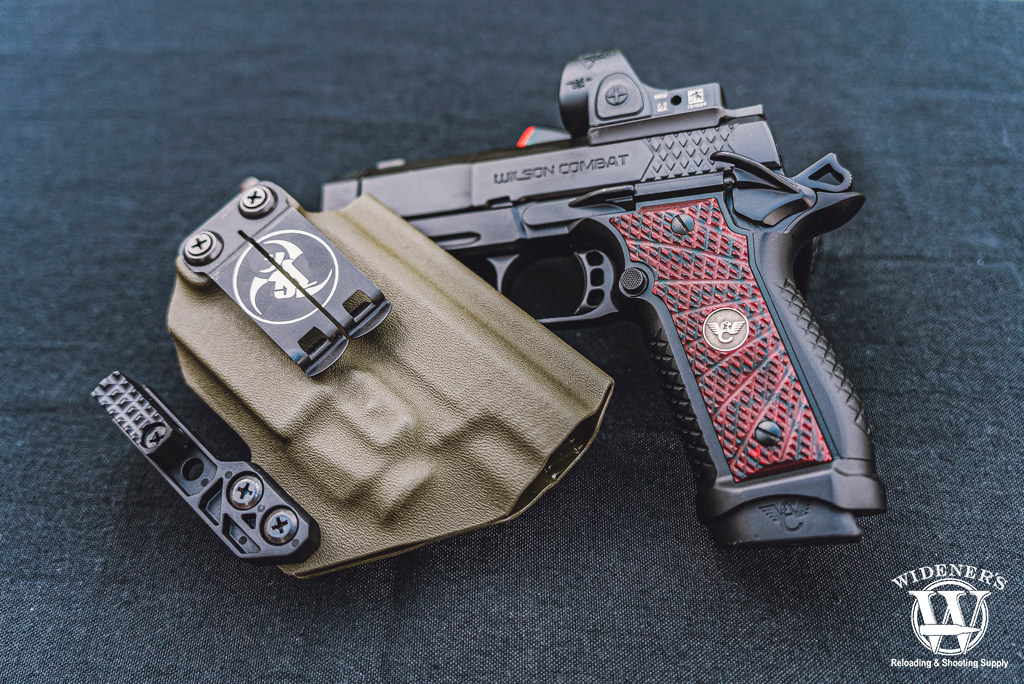
It’s a heavy handgun, but well balanced and easy to carry and conceal in a good holster.
My number one piece of advice for carrying a gun is to have the largest gun with the most capacity that you can conceal on your body. The gun needs to be comfortable so you’ll wear it daily, but that usually also depends on your belt, holster, and carry position. The 3.25-inch subcompact EDC X9 2.0 weighs 28.6 ounces when empty and without the compensator. While the compensator adds weight to the gun, it’s minuscule once fully loaded.
I would absolutely carry this gun every day. The compact design is easy to conceal, and the grip doesn’t print through my clothing. The right holster makes all the difference, and a claw will help reduce printing significantly. I ordered a light-compatible holster from ANR Designs with two Discreet carry clips and a claw.
ANR Designs takes great pride in its work and ensures proper fit and retention on its holsters. Whether you prefer to carry appendix-style or at the 4 o’clock position as I do, the claw will push against the back of your belt and tuck the grip tighter to your body. Always wear a good, sturdy belt to hold up your firearm when you carry it concealed.
Compatibility: Wilson Combat EDC X9 2.0
The base model of the EDC X9 2.0 pistol doesn’t come with a railed frame, so if you want to mount a light to the pistol, ensure you order the gun with this upgrade. The end of the frame features two Picatinny-style mounts to be as compatible as possible with various lights. If you do add a light, the compatibility with holsters also changes. Most holster manufacturers design light-bearing holsters around the model of the light and allow adjustable retention on the light, not the gun’s trigger guard.
It is crucial to pick out the sights or red dot optic you want on the gun before ordering. You can’t swap red dot optics unless they have the same footprint design. Once again, the Wilson Combat custom shop form has options to include cuts for the RMR, ACRO, and DeltaPoint Pro.
Again, I have to mention compatibility with holsters because not all holster manufacturers account for red dot optics on carry guns. Most holster manufacturers are making holsters designed with an “optic cut,” so there’s no interference between the Kydex material, for example, and the front of the optic. If there are options when ordering a holster that asks if you need it to be optic cut, ensure you order correctly for whatever sights you choose.
Wilson Combat EDC X9’s Durability
When people ask me about the durability of a Wilson Combat, I describe it as the last pistol they’ll ever need. If you want a firearm built to last that you can pass down through generations, this is it. Several friends have inherited a Wilson Combat pistol from a parent or grandparent, proving how durable these guns are. Wilson Combat creates some of the finest guns from high-end materials customized to the end customer’s desires.
While these guns look like works of art (which they are), they’re also built like tanks. You can shoot hundreds of rounds through it in a day without slowing down. You can drop it (which would be painful to watch) on concrete, and not one component of the pistol would be affected.
I have also attended many events where Wilson Combat brings demo guns, and I have shot their guns in sub-freezing temperatures with no issues. Where I live, I’m able to run guns through a torture test of my own in 90+ degrees and 90% humidity. The Wilson Combat EDC X9 2.0 ran well in that environment as well.
The importance of testing a carry gun can not be understated. Carry pistols must be reliable and durable, and shoot even if cold, hot, or covered in sweat or rain. Carry guns are usually neglected in terms of upkeep and maintenance, so they should also shoot whether they’re oiled or not.
The Range Test
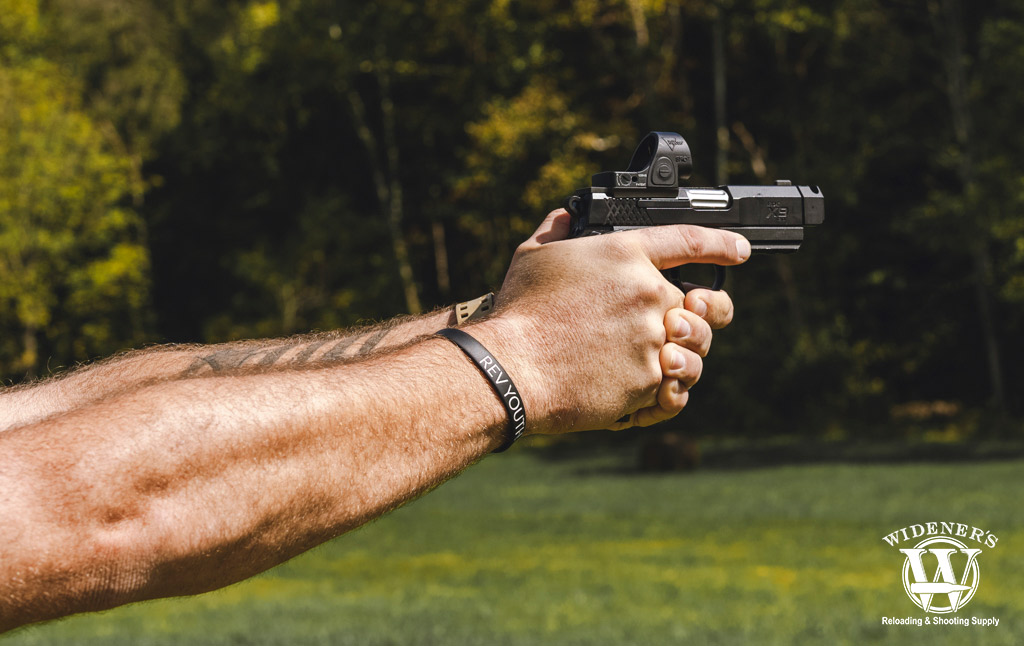
The EDC X9 2.0 runs like a champ, it ate everything we fed it at the range and came back for more.
My friends and I had a field day shooting the EDC X9 2.0 pistol with an exorbitant amount of ammunition from manufacturers such as Hornady, Federal, BLack Hills, Lehigh Defense, Fiocchi, Super Vel, and more. I hypothesized that the faster the velocity, the better the pistol would shoot. I also assumed that heavier-grain ammo, with a much slower velocity, could have an issue cycling through the gun.
My assumptions are based on my experience shooting compensated pistols. The compensator works better when it releases gases, which means the more gas, the better the performance.
The Black Hills 115gr JHP +P and Lehigh Defense 115 grain CF +P were the two types of ammunition where I saw the most difference in felt recoil. While this pistol cycled the Federal Action Syntech 147 and 150-grain ammunition, the gun had a “sluggish” feeling due to the slower velocity and heavier bullet.
It was great to see the X9 2.0 cycle ammunition loaded with different bullet profiles and to different overall lengths with ease. No matter what ammunition you choose, always test it in the gun you plan to carry to ensure it will run in that firearm.
Wilson Combat EDC X9: Pros & Cons
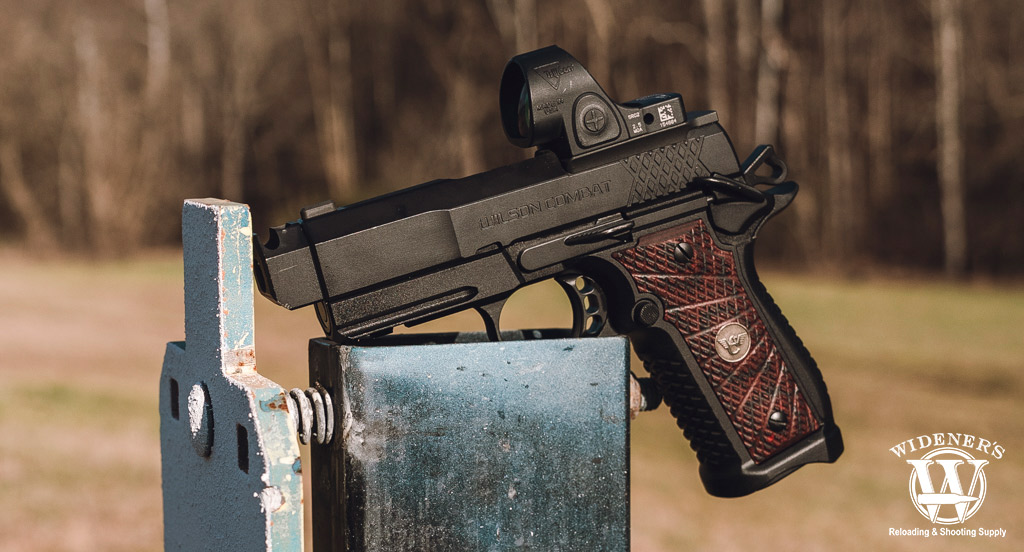
Buy once, cry once. The Wilson Combat EDC X9 2.0 is built to last for generations of use.
Everything you buy has pros and cons: houses, cars, appliances, you name it. Every gun you buy has pros and cons, and there is never a 100% guarantee that nothing will ever break. Guns are machines and tools, just like vehicles, requiring maintenance, but if you take care of them, they will take care of you.
Understand that a carry gun is no more than an equalizer in a fight; it is a tool that can help stop a threat and give you time to get to safety. You want the most reliable gun that you can shoot under pressure. Everyone has different budgets, but don’t ever skimp on a tool that could potentially save your life.
Pros of the Wilson Combat EDC X9:
- Easy to Conceal
- Reliable and Durable
- Guaranteed Accuracy
- Manageable Felt Recoil
- Compatible with holsters, optics, and weapon-mounted lights
Cons of the Wilson Combat EDC X9:
- Expensive for a carry gun—if you were ever to use this in a defensive shooting, your investment could be tied up in litigation for years.
- Not as easy to take down and clean for newer shooters or people newer to the 1911 platform
Price vs. Value of the Wilson Combat EDC X9 2.0
The Wilson Combat brand is well-known and respected for its work in building quality firearms. The price of their guns reflects their value. The guns they make will outlast any polymer-framed gun for generations to come. While most people see the price tag and move along, there is one perspective people don’t think about.
One Wilson Combat might be the price of six polymer-framed pistols, but how many would you consider a family heirloom? How many of those pistols will last generations? Would you bet your life on performing when you need it most? The price may be more than you’ve ever paid for a firearm, but it’s one you probably won’t regret.
Additional Options:
- Finish: Armor-Tuff / Combat-Tuff
- Grips: Black, Gray/Black, Black Cherry
- Ambidextrous: Thumb Safety
- Sights: Green fiber optic, Red fiber optic, Tritium, Gold bead
- Trigger Length Options: Short, Medium, Long
- Railed Frame: Addon
Who Am I?
I might not be a gunsmith or have a background in machining or manufacturing, but I have more hands-on shooting experience than most people gather in a lifetime. Having shot tens of thousands of rounds annually, I fire at least half a dozen (if not more) 1911-style pistols monthly. I’ve been competing in shooting sports for over a decade and now compete full-time using 1911 double-stack pistols.
I attend trade shows such as the SHOT Show, GOALs Conference, NRA Annual Meeting, and events nationwide, where I see firearms before they’re released and shoot them. I’m also a published writer in the industry and was selected in 2024 to cover Ballistic’s Best 1911s: Double & Single-Stack Pistols.
My knowledge and experience shooting many types of guns over the years earned me the honor of being the second writer to cover Ballistic’s Best 1911s. I am more than qualified to give you a detailed review of the Wilson Combat EDC X9 2.0 handgun.
Conclusion
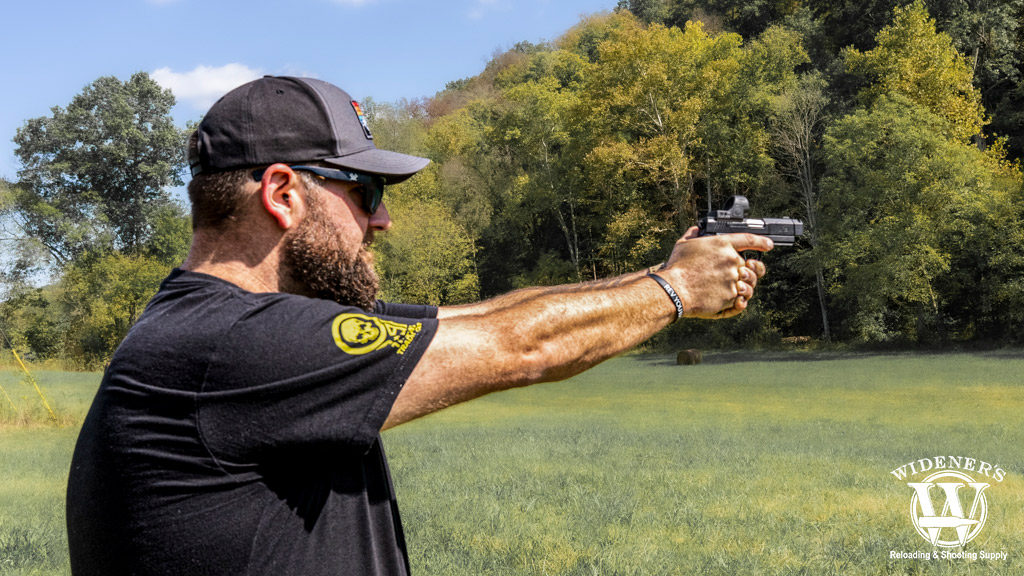
The Wilson Combat EDC X9 2.0 is a solid upgrade from the first version with improved ergonomics and performance.
The EDC X9 2.0 upgrades significantly improved the pistol’s performance. The optional upgrades, especially the added compensator, make this pistol the total package for concealed carry. The option to add a red dot optic makes this gun even more straightforward to train with. It’s an exceptionally well-made gun that you won’t want to put down. Every time I use it at the range I end up with a smile on my face. There’s no going wrong when getting yourself a Wilson Combat pistol.


